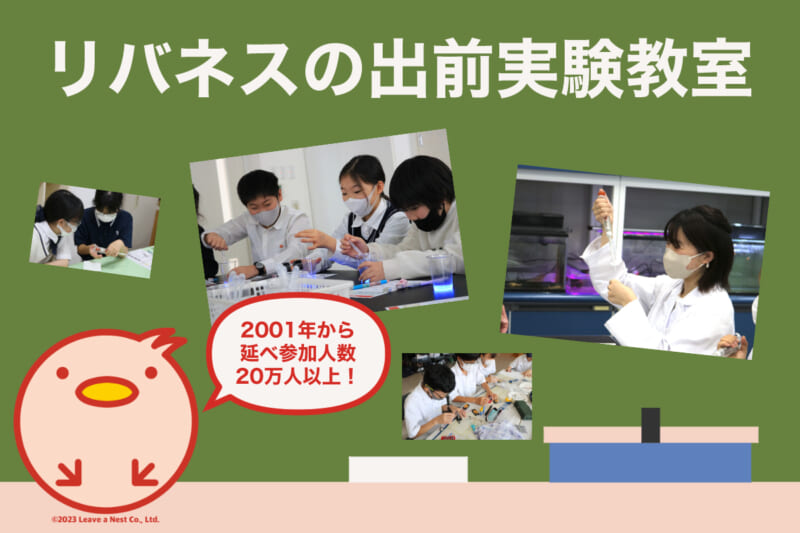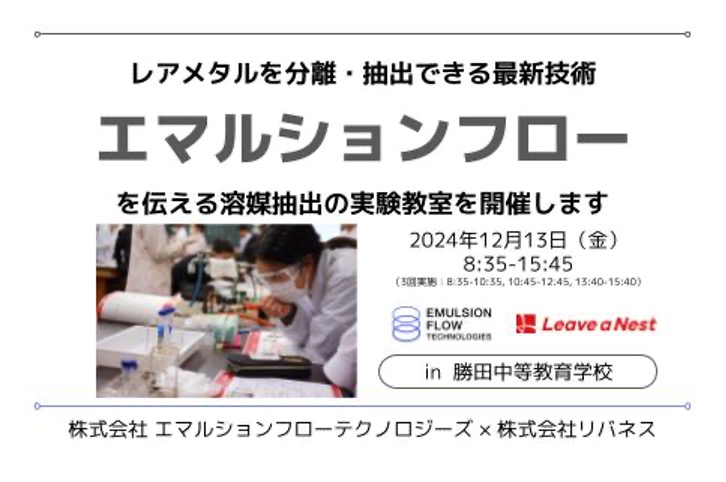Education and culture building
Development of delivery experimental class

summary
Since its inception, LIVERNESS Corporation has been developing the "Delivery Laboratory Classroom" program.
By communicating to middle and high school students how interesting it is to "turn a familiar mystery into an interest," we can expose them to a researcher's way of thinking and at the same time provide each student with an opportunity to "open the door to a new world that was previously unknown to him or her.
Technical Strengths
All of the employees of RIVANES are researchers with master's or doctoral degrees. In the delivery experiment class, young employees of RIVERNESS, who are close in age to the junior and senior high school students, stand in front of the children as instructors and teaching assistants.
So, how can we "build bridges" between ourselves as researchers and middle and high school students, not all of whom are necessarily science enthusiasts? And how can we encourage them to take the first step of "turning a familiar mystery into an interest"? At LIVERNESS, we call the communication to realize this "Science Bridge Communication ®️" and have spent more than 20 years developing a nurturing program.
On the day of the lab class, ®️, a RIVANES Science Bridge Communicator who has acquired these skills, will present science and technology to middle and high school students in an easy-to-understand manner, using her own real-life experiences.
Flow chart for implementation
(1) Decide on implementation: Hearings and meetings with teachers to determine what kind of classroom they would like to have.
(2) Program Creation: Experimental systems and lectures will be created according to the theme.
(3) Program confirmation: Experienced staff members check lecture content to ensure quality.
(4) Implementation: Communicating Science and Thoughts
Case Studies (Including Demonstration Results)
- Provided to
- Many business companies, venture companies, schools, etc.
- Case Studies
- https://lne.st/category/ep/science-school/



